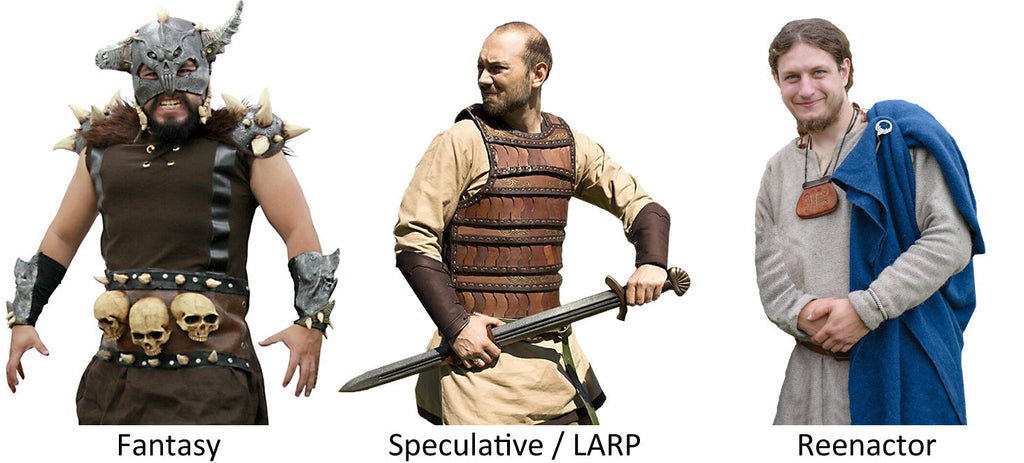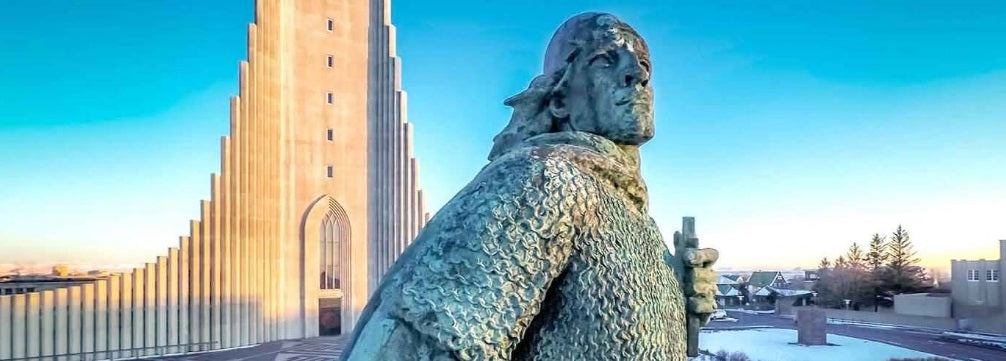
Viking Art Styles
Posted by Sons Of Vikings on
Thanks for visiting our blog! As a thank-you, enjoy 15% off your first order in our online Viking Shop with the discount code BLOG15. A Brief Introduction to the six styles of Viking Art The Norse of the Viking Age (circa 793-1066) were very artistic people. Unlike Classical artists who sculpted or painted as an end unto itself, though, the Vikings used art to beautify everyday things. They would chisel the prows of their ships into dragon heads, and carve spiraling designs on the gunwales. They would engrave bone combs and drinking horns, or carve walrus tusks into ivory game pieces. They used sophisticated metallurgic techniques to decorate weapons and make cunningly-designed jewelry. Sometimes their art would serve as an eternal...

Continued Viking Activity in America
Posted by Sons Of Vikings on
Thanks for visiting our blog! As a thank-you, enjoy 15% off your first order in our online Viking Shop with the discount code BLOG15.The Vikings in Greenland and America (part 4 of 4) The previous articles in this short series described the Viking expeditions to North America recorded in the sagas. We can say with some confidence, though, that there were more of these adventures. There are hints in the historical record of journeys to Vinland and Markland for lumber or raw materials. There is also the possibility that some small numbers of people may have attempted colonies there as conditions in Greenland deteriorated. Archaeologists are finding artifacts spread over various parts of Newfoundland and beyond. However, finding definitive proof of lasting contact...

Vikings in America after Leif Erikson
Posted by Sons Of Vikings on
Thanks for visiting our blog! As a thank-you, enjoy 15% off your first order in our online Viking Shop with the discount code BLOG15.The Vikings in Greenland and America (part 3 of 4) Part 1 (Erik the Red) is available here. The Greenland Vikings mounted several more expeditions to America. These ranged in size and success. But each showed the new world was a place of both potential and peril. The scions of Erik the Red took the lead in most of these early adventures. Thorvald’s Ill-fated Expedition (1002) The year after Leif’s return and Thorstein’s unsuccessful expedition, their brother Thorvald set out with one ship. He found Vinland and chose a spot for a settlement. Thorvald and his men had not been...

What Did Vikings Wear? Clothing Realism vs Creative Interpretation
Posted by Sons Of Vikings on
There are many different interpretations of what Vikings looked like. While some may be more verifiable than others, no single image matches the vast diversity of the Viking Age that spanned more than 250 years and inhabited more than a dozen geopolitical areas with a wide variety of different cultures and influences. While there have been substantial archaeological finds and active scholarship, much of that world is lost to time. It is a shame, then, that sometimes people let quarrels about what may or may not be “accurate” get in the way of their shared interests and appreciation.

Leif Erikson
Posted by Sons Of Vikings on
The Vikings in Greenland and America, Part 2 (of 4)
...they explored the coast and several islands (most experts agree that these coastal finds were most likely Newfoundland, Nantucket, and/or the Labrador Coast of Canada). Winter was coming, so the party built a longhouse from the abundant timber.

Erik the Red
Posted by Sons Of Vikings on
The Vikings in Greenland and America, Part 1 (of 4)
Most assume that Erik was called "the Red" for his hair or for his ruddy complexion (the sagas do not explicitly say). He may have been more aptly called "the Red" for his charisma, his fiery temper, or his bad habit of killing people.

Viking Falconry
Posted by Sons Of Vikings on
Some graves in Norway and Sweden from the Vendel period and Viking Age contained the bones of falcons along with the high-status warriors interred there. Archaeologists have found other graves and treasure hordes that contained small iron or copper bells that may be associated with falconry. In addition to this material evidence, there are runestones that depict hunters with dogs and falcons, including those at Alstad, Toten (Norway), and Böksta, Uppland (Sweden).

Viking Poetry
Posted by Sons Of Vikings on
Skalds were the poets of the Vikings, and poetry and storytelling were the most-prized art forms in Norse culture. Poetry was considered a gift of Odin, the Allfather chief god of the Vikings, and just being a skald made a person part of the jarl upper class in their society.

Vikings and Christianity
Posted by Sons Of Vikings on
Many early Viking Christians seem to have just incorporated Christ into their cosmology rather than completely rejecting their old ways. We find sayings in the sagas like, "On land I worship Christ, but at sea I worship Thor."

King Alfred the Great, Viking Fighter and Father of England
Posted by Sons Of Vikings on
Thanks for visiting our blog! As a thank-you, enjoy 15% off your first order in our online Viking Shop with the discount code BLOG15. It was late in the year 871 when the 23-year-old Alfred, newly-appointed king of the last free Saxon kingdom in Britain, sat down for peace talks with two sons of Ragnar Lothbrok and other leaders of the Great Heathen Army. For young Alfred, it would be impossible not to feel intimidated by the situation. Halfdan Ragnarson and his half-brother Ubba (or Hubba) were twice Alfred’s age and had ten times his experience. Alfred had met these Viking champions three years before – but in 868 he had only been in the entourage of his older brother, King...
